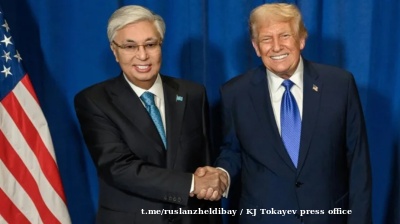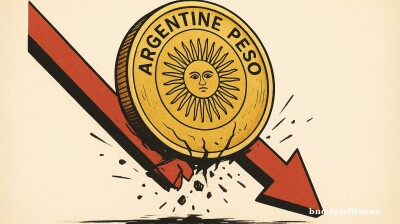In late September 2025, the Malaysian government unveiled a recalibrated approach to its long-running petrol subsidy, lowering the price of RON95 for citizens to MYR1.99 ($0.47) per litre, down from MYR2.05. The move is not a blanket subsidy but rather a targeted scheme. Citizens are eligible for the reduced rate, capped at 300 litres per month, while foreigners and non-eligible users will be required to pay the unsubsidised rate, estimated at around MYR2.60.
According to The Straits Times, the policy shift was framed as a way to “reduce leakages” and focus subsidies on Malaysian households rather than non-residents or smugglers.
This step represents a political compromise. Prime Minister Anwar Ibrahim’s administration has been under pressure to control spending without fuelling public discontent over rising living costs. By lowering the visible price at the pump while simultaneously introducing caps and verification systems, the government aims to show that it is easing burdens on citizens while tightening fiscal controls.
Originally, the government projected that fuel subsidy rationalisation would save close to MYR8bn annually, according to The Edge Malaysia. However, the revised scheme is expected to deliver a more modest saving of MYR2.5 to MYR4bn. The gap highlights the balancing act between fiscal prudence and political feasibility. Too sharp a cut risked a backlash; too soft a cut risked leaving Malaysia’s subsidy bill unsustainable.
Despite the smaller savings, officials stress that the recalibration sends a clear signal of reform intent. With subsidy costs historically among the largest drains on the national budget, Malaysia’s leaders have emphasised redirecting funds toward social welfare and infrastructure. Economists quoted in Nikkei Asia noted that while the measure will not transform the fiscal landscape overnight, it demonstrates an important willingness to chip away at long-standing subsidy structures.
Economic ripples
Fuel prices are a sensitive component of Malaysia’s cost of living, feeding directly into transport, food distribution, and household budgets. Analysts at Bloomberg warned that even a partial reduction in subsidies can carry inflationary consequences, particularly if global crude oil prices rise in the coming months. The government’s cap is designed to protect households from runaway increases, but frequent drivers and businesses reliant on large volumes of fuel may face higher effective costs once they surpass the 300-litre threshold.
At the same time, supporters of the change argue that a targeted system is fairer and more efficient. Subsidising every litre of petrol used, including for luxury cars and non-citizens, has long been criticised as regressive. By limiting the benefit and directing savings to programmes such as cash transfers and health subsidies, Malaysia is attempting to ensure that lower- and middle-income households see more direct relief.
Much hinges on enforcement, however. The cap relies on digital verification, requiring drivers to present their MyKad or use mobile-based systems at petrol stations. According to The Star, early trials revealed some difficulties with card readers and potential delays at pumps. Authorities have pledged backup procedures to prevent long queues, but critics caution that teething problems could frustrate the public and undermine trust in the system.
Cross-border fuel smuggling has also been a persistent challenge. Malaysia’s cheaper petrol prices have historically attracted buyers from neighbouring Thailand and Singapore. Differential pricing increases that incentive, making enforcement at both pumps and borders critical. Officials have said ride-hailing and delivery drivers may receive exemptions or additional quotas, though the details remain under review.
Political and long-term considerations
Politically, the recalibration reflects the government’s need to protect its popularity while sending a message of fiscal responsibility to investors. In the short term, citizens may welcome the nominal drop in price, but those exceeding the cap or non-citizens living in Malaysia will feel penalised. As Malay Mail reported, some civil society groups have already raised concerns that implementation may disadvantage migrant workers and foreign residents who contribute to the economy.
Looking ahead, the sustainability of this approach will depend on consistency and transparency. Economists argue that subsidy savings must be ring-fenced and channelled into visible, productive uses, such as education or healthcare, to maintain public trust. If Malaysians perceive that savings are wasted or diverted, the credibility of subsidy reform will erode.
Malaysia’s decision to lower RON95 prices while capping and targeting consumption illustrates a pragmatic middle ground between fiscal necessity and social sensitivity. By lowering the pump price, the government has softened public resistance; by introducing quotas and verification, it has reduced waste and leakage. Whether this policy becomes a model for sustainable reform or a temporary political patch will depend on execution, enforcement, and the government’s discipline in using savings wisely.
As Channel News Asia observed, Malaysia has taken a “cautious but necessary step” toward rationalising subsidies. It is less about the immediate pump price, and more about whether this incremental reform can lay the foundation for broader structural changes in the years ahead.
Features

Did Tokayev’s visit to New York indicate any meaningful expansion of Kazakh-American economic ties?
Best not believe the hype.

Water scarcity forces a rethink of Tehran's dominance
Iran is fast running out of water fast and the country's president wants to move the capital immediately.

LONG READ: Trade is the glue that holds Global Emerging Markets Institutions together
The world order is changing. The emerging markets are coming of age and they are setting up a raft of largely non-Western Global Emerging Markets Institutions (GEMIs) to coordinate their lives. Trade is the glue that binds them together.

Trump tariffs to dent revenue of Indian home textile industry by 5–10%
India’s home textile industry is bracing for one of its most challenging years, after the United States imposed steep tariffs of 50% on a broad set of Indian exports with effect from August 27




